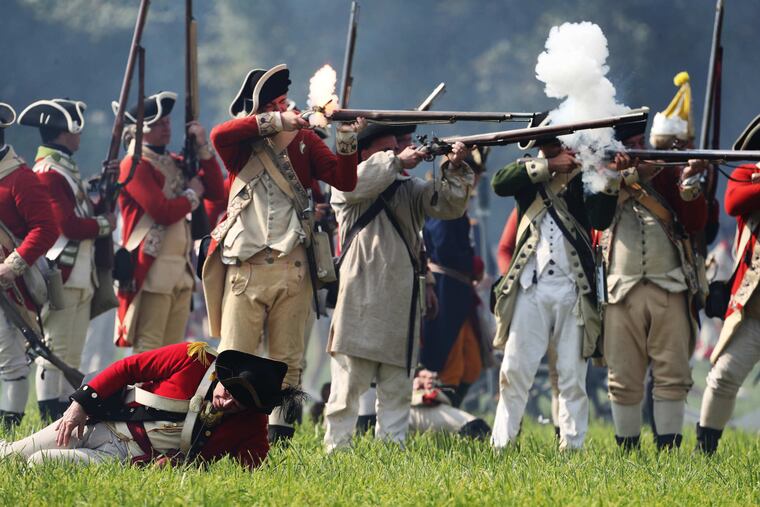10 acres at Brandywine Battle site preserved in Chester County
Ten acres surrounding Osborne Hill in Westtown Township have been preserved, as part of ongoing efforts to save key grounds of the Battle for the Brandywine.

Natural Lands has signed a conservation easement to preserve 10 acres in Westtown Township to add to the Chester County portion of the sprawling Brandywine Battle site.
The parcel surrounds a key location on one of the largest battles of the American Revolution.
In 1777, Gen. George Washington took a position along Brandywine Creek in an attempt to keep 15,000 British and Hessian troops commanded by Gen. William Howe from capturing Philadelphia.
In the final stage of the battle, Howe sought a high point to view the landscape. He found the 370-foot-high Osborne Hill, climbed to the top, and formulated a plan while overlooking the farms and villages settled by Quakers.
Washington lost the battle and Howe took the city but failed to crush the Continental Army, which continued to fight.
Now, 10 acres next to Osborne Hill have been preserved as part of ongoing efforts to save key grounds of the Battle for the Brandywine, which was fought among 35,000 acres in Chester and Delaware Counties, including the 50-acre Brandywine Battlefield Park administered by the Pennsylvania Historical & Museum Commission.
But most of the land where the battle was fought is not preserved, so conservationists hail any additions. The new easement includes a meadow, lawn, three acres of forest, a pond, and community garden. Though the new addition is small, those involved say it is a key acquisition. Osborne Hill had been preserved in 2018, and this protects adjacent land.
“That’s extremely significant,” said Jeannine Speirs, a planner with Chester County and administrator for the Brandywine Battlefield Task Force. “I mean it’s one of the top if we’re talking about one of the top properties that’s important to be preserved.”
Natural Lands said this week it arranged the deal to preserve the parcel owned by Church of the Loving Shepherd. The church was paid $192,880 from grants for the conservation easement, which severely limits use of the land, though the church will continue to own it.
Natural Lands, which bills itself as the oldest and largest land conservation organization in the Philadelphia region, said the parcel had been approved for a subdivision, but the church chose preservation instead.
“The members of the Church of the Loving Shepherd recognize that their property has important value to the community,” Chris Ross, church president, said in a statement. “... The members of the church feel it is very important that this section of our property be protected from development and other uses that would degrade its value to the public.”
Oliver Bass, president of Natural Lands, said it was “fortunate that the Church of the Loving Shepherd saw the historical and ecological importance of this property and ensured its permanent protection.”
Funding for the easement — as well as almost $50,000 in additional costs — came from multiple sources. Chester County provided $107,440 through a Preservation Partnerships Program grant, and Pennsylvania contributed $107,545 from a Keystone Communities grant. The Virginia Cretella Mars Foundation contributed $9,162 to help cover additional costs, and the church kicked in $17,900 for a stewardship endowment meant to enforce the easement.
Speirs said multiple private and public efforts are underway to protect as much of the battlefield as possible. It wasn’t until 2015 that the full boundary of the battlefield was finally delineated.
Chester County’s Brandywine Battlefield Preservation Plan outlines the full scope of the project, as well as a plan with a focus on Osborne Hill.